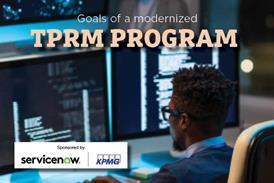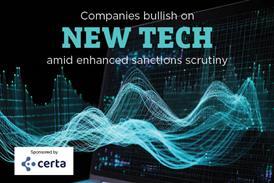Demand for sustainability reporting has increased significantly. With multiple reporting frameworks available, financial executives and accountants at all levels are challenged as they try to identify and include relevant environmental, social, and governance (ESG) information in their financial reports within reporting deadlines.
At Financial Executives International’s (FEI) Corporate Financial Reporting Insights Conference in November, a panel of preparers discussed current practices and the challenges their controllership teams face in ESG reporting and governance.
The current state
Organizations are in different phases of their ESG reporting. Some companies have included sustainability metrics in their annual reports or in separate reports for many years, but others are in the early stages. For those reporting, it is an iterative process requiring continuous improvement.
As companies provide more ESG information to meet needs of investors and analysts, many are finding they have a lot of information reported in a lot of different forums.
“We have a number of sustainability reports, but we are stepping back, rethinking, and taking a more holistic approach to what we report and where,” said Amie Thuener, vice president, chief accounting officer at Alphabet, Google’s parent company.
What reporting frameworks apply?
A significant challenge for companies in all industries is assessing the multiple reporting frameworks available. These include guidance from the Sustainability Accounting Standards Board (SASB), Global Reporting Initiative (GRI), Climate Disclosure Standards Board (CDSB), Task Force on Climate-Related Financial Disclosures (TCFD), and numerous smaller frameworks.
“There are two completely different definitions of materiality for SEC (Securities and Exchange Commission) filing purposes and for sustainability reporting, which makes it extremely difficult and confusing,” said Marc Siegel, partner at EY’s Financial Accounting Advisory Services. “There are also different materiality definitions in the different frameworks, and preparers need to look at this closely.”
Siegel noted the SASB and TCFD guidance are narrower and more focused on investors, while the GRI considers a broader audience and includes companies’ sustainability impacts on society.
“We have a number of sustainability reports, but we are stepping back, rethinking, and taking a more holistic approach to what we report and where.”
Amie Thuener, Vice President, Chief Accounting Officer, Alphabet
Where is the information?
For most companies, there is no centralized system that holds all needed ESG data. When companies inventory their ESG metrics and sources of data, it is likely to require manual effort. Data (e.g., headcount, costs, emissions) can reside in systems outside of finance or in third-party systems outside of the company, which raises process and control issues.
Software providers are developing general ledger ESG reporting modules, but users must evaluate them and whether they can be easily integrated into existing financial reporting systems.
Timing issues
The availability of ESG data and what needs to be done to it and lack of automation create timing challenges. Many companies issue their sustainability reporting much later than their financial reports.
“Our sustainability report is issued in May, which won’t work for SEC reporting in January or February,” said Teri Reinseth, senior vice president, corporate controller and chief accounting officer at 3M Company. “The question is how to accelerate pieces of sustainability reporting and make process changes so it aligns with financial reporting.”
Preparers are working within their industries and providing feedback to regulators about these timing issues and the possibility of reporting ESG information at different dates from financial reporting.
Resources
Because companies are in different stages of sustainability reporting and the requirements are changing, they must consider the need to train employees on ESG matters and reporting requirements.
For finance staff, controllers are turning to their accounting firms and other external sources of training because of the rapid changes that are occurring. The goal is not to make them subject matter experts, but to raise awareness that this is an evolving area. Staff must learn the terminology and what information investors and analysts consider relevant.
“We are using more on-the-job training and learning from each other, including weekly meetings with our cross-functional ESG group to share best practices and emerging topics,” said Merilee Buckley, chief accounting officer at Etsy. Many organizations utilize in-house training, including employees from finance, internal audit, investor relations, human resources, legal, and sustainability teams, to share knowledge about what the data means along with the importance of reporting processes and controls.
A recent development in standards
In response to feedback from investors, regulators, and preparers that global financial markets need consistent and comparable sustainability reporting, the International Financial Reporting Standards (IFRS) Foundation on Nov. 3 announced significant developments for providing high-quality disclosures on climate and other sustainability matters.
The International Sustainability Standards Board (ISSB) was formed to develop a global baseline of high-quality sustainability disclosure standards. The ISSB will cooperate with the International Accounting Standards Board to ensure there is coordination between ISSB sustainability and IFRS accounting standards.
The IFRS Foundation made a commitment to consolidate sustainability disclosure organizations—the Climate Disclosure Standards Board initiative and the Value Reporting Foundation—into the new ISSB by June. A working group formed by the IFRS Foundation in preparation for the ISSB published prototype climate and general sustainability disclosure recommendations for the ISSB to consider as they develop standards.
Oversight
Primary responsibility for ESG governance and reporting can reside in different parts of the organization. Many companies are creating separate sustainability groups to oversee the data gathering because the information and subject matter expertise is typically embedded across the organization.
“There are synergies with the 10-K reporting process, but it is a journey and ‘it takes a village,’” Buckley said.
Instead of leading sustainability reporting efforts, finance and controllers at many companies focus on the sources of needed information and any gaps; the controls and systems used to gather the data and make sure it is accurate and complete; and the process and repeatability of the reporting.
There can be different levels of engagement and involvement by boards and committees in sustainability reporting. At some companies, there is a separate sustainability committee that reports to the board on ESG goals and strategies. Audit committees might review sustainability reports issued as part of their overall responsibility for company disclosures and are likely interested in ESG because it is an emerging issue and important part of corporate governance.
SEC scrutiny
As a result of the SEC’s increased interest and communications about sustainability reporting, there is greater engagement by boards and audit committees on ESG strategy, what is reported, and ensuring metrics are accurate.
In September 2021, the SEC’s Division of Corporation Finance issued an illustrative sample comment letter on climate-related disclosure that refers to 2010 nonauthoritative climate change guidance.
“We are reviewing the letter and how the SEC is thinking and interpreting the 2010 rules in today’s environment, and we are considering potential 10-K changes and how we would reply if we received the comment letter from the SEC,” Thuener said.
Assurance
As ESG reporting becomes more frequent and more detailed, there is an evolution in the desire to have third parties, like accounting firms, provide assurance on that reporting. Some companies already get assurance on certain aspects of their reporting, like environmental metrics and debt with ESG features.
Because there are many open issues and changes in what is reported and why, including what is required or voluntary and what standards to apply, this area is evolving. The future state of assurance is unknown. It will likely be driven by market demands and the willingness and ability of accountants and other experts to provide assurance.
At the American Institute of Certified Public Accountants’ (AICPA) conference on Current SEC and Public Company Accounting Oversight Board (PCAOB) developments in December, another panel of preparers and auditors shared their experiences on how companies are preparing for increased ESG disclosure requirements and the potential for more third-party assurance.
Corporate governance over ESG reporting
“ESG business risks and opportunities are really no different than other emerging business risks and opportunities. Companies need a disciplined and systematic end-to-end approach, starting with an effective governance structure,” said Deloitte Partner and Leader of Sustainability Services Kristen Sullivan at the AICPA event. “The time to act is now and approach this like any other business transformation.”
Although chief financial officers in many organizations have not historically been involved in sustainability reporting, for it to be high quality, ESG reporting needs to be integrated into financial reporting. Finance can establish effective corporate governance over the process and can engage the auditors to help.
“CFOs need to connect the dots between sustainability reporting and 10-K reporting and provide more transparency in the 10-K about significant ESG risks,” said Sara DeSmith, partner at PwC.
“ESG business risks and opportunities are really no different than other emerging business risks and opportunities. Companies need a disciplined and systematic end-to-end approach, starting with an effective governance structure.”
Kristen Sullivan, Partner and Leader of Sustainability Services, Deloitte
“It’s important for finance to be involved, ask questions, and not wait to be pulled into the process,” added Pamela Oberski, North America finance director at Dow. “They should look at the ESG report and make sure there are no disconnects with the 10-K.”
Sullivan has observed in the past year a higher degree of engagement by boards, wanting to understand how to operationalize oversight and get this right for risk management. “Boards are getting more excited, taking a more strategic focus and surfacing opportunities to capture market share and drive value,” she said.
How can auditors help?
To prepare for rulemaking that might be coming, DeSmith recommended involving internal and external auditors to help identify ESG topics that need to be created and tracked and the related disclosure controls and procedures. It is key that there is the same level of data quality as for financial statements.
“Finance and internal audit can do pre-assurance readiness walkthroughs of the sustainability reporting process to provide valuable learning and assess basics of processes and controls, cutoff, consistency, audit evidence, and professional skepticism about the data gathering,” she said.
As external auditors move to providing more assurance on ESG metrics, they can add credibility and higher quality to the management and disclosure process. “Assurance can provide tremendous value as an accelerator to more effective governance,” Sullivan said.
“As we move to integrated ESG and financial reporting, using financial statement auditors for ESG assurance makes sense and adds efficiency because they already have knowledge of the business and its financial and operational systems and can leverage their assurance procedures,” DeSmith said “They are also held to rigorous ethics, independence, and quality control standards.”
Engaging ESG stakeholders
As demands for ESG information continue to evolve and companies work through the many reporting challenges, it can be helpful for them to engage users of their ESG information.
“Tighten up the process by identifying the half dozen really important things investors want that drive value,” said Steve Gibbs, vice president, chief accounting officer and corporate controller at The Home Depot.
“Every organization needs to think through how it engages stakeholders in evaluating what is material and relevant to the business and document considerations for what information it is providing and to whom,” Sullivan said. “Companies need to understand the changing information needs of different stakeholders, how disclosures enhance confidence, and how controls and the governance structure need to be enhanced.”

Topics
- Accounting & Auditing
- AICPA
- CDSB
- Climate Disclosure Standards Board
- climate-related disclosure
- ESG reporting
- ESG/Social Responsibility
- FEI
- Global Reporting Initiative
- IFRS
- Internal Controls
- International Financial Reporting Standards Foundation
- International Sustainability Standards Board
- ISSB
- Risk Management
- SASB
- SEC
- Securities and Exchange Commission
- Surveys & Benchmarking
- Sustainability Accounting Standards Board
- Task Force on Climate-Related Financial Disclosures
- TCFD
- United States





















No comments yet